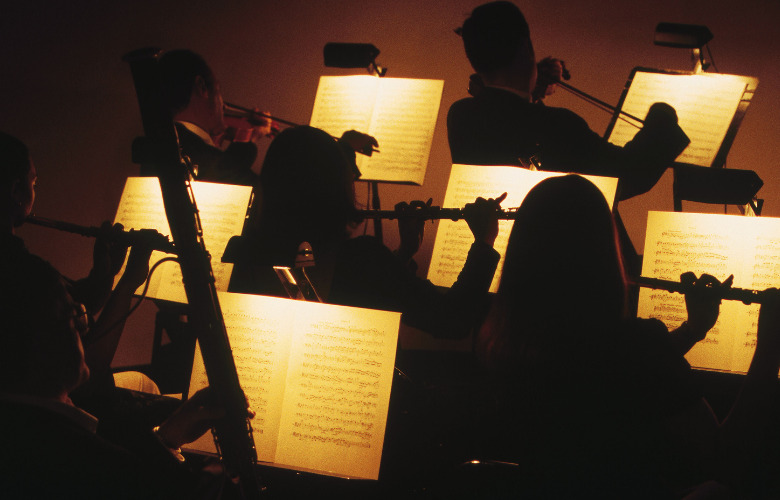
Traditional Symphonies laid a profound foundation upon which many musical genres have been built, not the least of which is modern pop music. The sophisticated arrangements and intricate compositions of classical music have quietly weaved their influence into the ever-evolving tapestry of pop, becoming more than just an echo of the past, but rather a persistent whisper that shapes the modern auditory experience.
Peeling back the layers of music history, the classical era, typified by the works of composers like Mozart, Beethoven, and Bach, bestowed a rich trove of musical methodologies and theories that have stood the test of time.
These composers demonstrated a mastery of harmony, melody, and form, each piece a testament to structured beauty and expressive depth. The eras that followed bore witness to the integration of these classical elements into newer forms of music, each epoch borrowing from its predecessors, continuously blurring the lines between the archaic and the contemporary.
Modern pop has an undeniable entwinement with classical elements, weaving intricate harmonies, melodic structures, and strategic crescendos into its fundamental fabric. Elements like
that were once synonymous with concertos and symphonies, now seamlessly embed themselves into the pop music soundscape, providing a lush, immersive dimension that elevates simplistic pop melodies into something infinitely more profound.
Pop music, known for its catchy and repetitive melodies, often hides a complexity that is rooted in classical harmonic progressions.
The IV-V-I and ii-V-I progressions, staples of classical harmony, find themselves reinterpreted in pop’s playful and often emotionally charged tracks, providing an undercurrent of familiarity and resolve that appeals to our intrinsic musical sensibilities.
While taking online lessons with a music teaching app like Skoove or others you can find harmonic structures that offer pop music a scaffold upon which melodies can dance, inadvertently crafting a bridge between epochs of musical evolution. That’s why music teaching apps offer classical music libraries next to pop modern music melodies as all these types can be equally good guides for learning to play an instrument.
Structural influences from classical music permeate into pop through established forms like sonata-allegro or theme and variations, shaping the narrative arc of modern compositions. Beyond the often-utilized verse-chorus-verse structure, pop artists may integrate elements like preludes, interludes, or codas, crafting a dynamic sonic journey that mirrors classical storytelling through music, thereby lending a cinematic or episodic quality to their creations.
The cross-pollination of classical music into the modern pop arena brings forth a melodic entente where artists weave timeless arrangements into contemporary beats and rhythms. Numerous pop artists and bands have sculpted their sounds by entwining threads of classical influence, rendering a rich and often emotionally textured listening experience. Below are a few artists and instances where the classical genre has permeated modern pop creations.
Lady Gaga, with her avant-garde style and genre-bending capabilities, has recurrently implemented classical elements within her music. An evocative example of this is her performance with Elton John at the 2010 Grammy Awards, where they amalgamated a dramatized, classical piano duet into renditions of their pop hits. Gaga’s penchant for the piano and orchestrated arrangements often peppers her tracks with a noticeable classical aesthetic.
The UK-based electronic group, Clean Bandit, notably combines classical strings and electronic-pop in a compelling synthesis. Their smash hit “Rather Be” features a prominent violin riff which, when juxtaposed with an upbeat electronic groove, manifests a splendid blend of classical and contemporary sounds. Their unique sound palette frequently sees a marriage of stately string arrangements with dynamic pop and electronic elements.
Panic! At The Disco’s lead vocalist, Brendon Urie, has demonstrated a deep appreciation for classical music, often melding theatrical elements with pop rock. Their track “This Is Gospel” opens with a solitary piano, gradually unfolding into a richly textured, anthemic melody. Additionally, the operatic quality often found in Urie’s vocal delivery, as well as the integration of piano and string sections, reflects subtle, yet impactful, classical undertones.
Though slightly different from the above-mentioned pop artists, Vanessa-Mae deserves a nod for her blending of classical and pop genres. A violin virtuoso, she has carved out a niche by creating music that intertwines classical violin with pop, rock, and electronic elements. Her work stands as a testament to how classical instruments and structures can morph into the pop genre, providing a bridge between traditions.
2Cellos, a Croatian cello duo, creates a striking fusion of classical and pop-rock music, covering songs from artists like Michael Jackson and AC/DC, all while maintaining a distinct, classical instrumentation. By transporting modern melodies into a classical format, they offer listeners a unique auditory journey, challenging conventional boundaries between the genres.
These artists, among numerous others, exemplify a symbiotic relationship between classical and pop music, each leveraging the emotive and structural prowess of the former to enrich and deepen the latter. The result is a multifaceted musical experience that transcends temporal confines, linking the enduring legacy of classical composers to the innovative spirit of modern pop.
Technology has democratized the learning of music and instruments by providing a plethora of applications and platforms that facilitate self-paced, intuitive learning. Apps like Skoove or Fret Trainer have dismantled traditional barriers, allowing aspiring musicians to explore, learn, and create, inspired by both classical and pop influences. These platforms often encompass a range of musical styles, enabling users to traverse the musical timelines, from baroque to contemporary, thereby fostering a new generation of musicians who blend the classical and the modern in harmonious unity.
In essence, as disparate as classical and pop music may seem on the surface, beneath the catchy melodies and electronic beats of the latter often lies a heart that beats in a timeless classical rhythm. This intersection of eras, where Mozart may meet modernity, encapsulates a continuum where music, in its various forms, dialogues across time, nurturing a rich, ever-expanding sonic tapestry for generations to come. Within the pop genre, elements such as harmonic progressions, structural influences, and even distinct melodic fragments extracted from classical compositions have frequently been utilized, contributing to the creation of a multilayered musical environment where old meets new. The confluence of these two seemingly disparate worlds is mirrored in contemporary artists who embrace classical elements, either subtly or overtly, in their creative processes and productions.


Guest Posts are written by featured authors who are not frequent contributors to TheatreArtLife. Details of the contributor can be found within each article unless the author wishes to remain anonymous. If you would like to submit a guest article to TheatreArtLife, please visit TheatreArtLife.com/Contribute or select CONTRIBUTE in the menu.
Read Full Profile© 2021 TheatreArtLife. All rights reserved.

Thank you so much for reading, but you have now reached your free article limit for this month.
Our contributors are currently writing more articles for you to enjoy.
To keep reading, all you have to do is become a subscriber and then you can read unlimited articles anytime.
Your investment will help us continue to ignite connections across the globe in live entertainment and build this community for industry professionals.